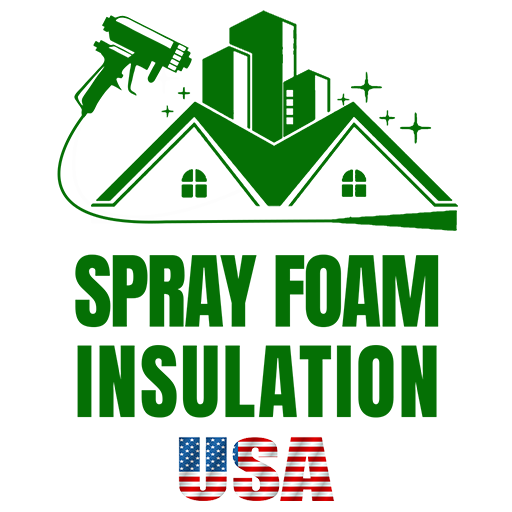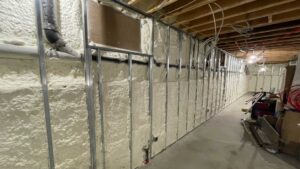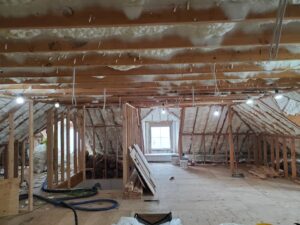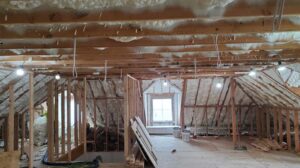Insulation is key to keeping your home cozy and your energy bills low. If you’re looking for a quick answer on how to make your home more energy-efficient, here’s the gist:
- Insulate your attic and walls to keep heat in during winter and out during summer.
- Seal doors and windows to prevent drafts.
- Upgrade to thermal curtains for an extra layer of insulation.
- Consider insulation types like spray foam or batt insulation depending on your needs.
- Don’t forget about air sealing to stop heat leakage.
When energy costs continue to rise and environmental concerns are more important than ever, insulating your home is a step you can’t afford to skip. Not only does proper insulation save you money by reducing heating and cooling costs, but it also makes your living space more comfortable year-round.
For homeowners and business owners in NY and NJ, finding the right insulation solution means not just slashing energy bills, but also contributing to a greener planet. Whether you’re building new, renovating, or just looking to improve your property’s energy efficiency, understanding the basics of insulation is the first step.

From spray foam to fiberglass, and from attic insulation to sealing those sneaky drafts, our guide is here to walk you through everything you need to know. Let’s make your home or business not just a space, but a sanctuary of comfort and efficiency.
Understanding Home Insulation
When it comes to keeping your home cozy and your energy bills low, understanding home insulation is key. Let’s break down the basics: the types of insulation, what R-value means, how insulation works against conductive heat transfer, and the importance of air sealing.
Types of Insulation
There are many ways to insulate your home, each with its own set of advantages:
- Spray Foam: Fills every nook and cranny, creating an airtight seal.
- Fiberglass Batts and Rolls: Easy for DIY projects, fits snugly between joists and studs.
- Rigid Foam Boards: Great for exterior and interior wall sheathing.
- Loose-fill: Perfect for attics with irregular joist spacing or lots of obstructions.
What is R-value?
The R-value is a measure of how well insulation can resist heat flow. The higher the R-value, the better the insulation material is at reducing energy consumption. For example, spray foam insulation has a higher R-value per inch compared to fiberglass, making it more effective in less space.
Conductive Heat Transfer
Heat moves from warmer to cooler areas until there’s no longer a temperature difference. In your home, this means heat will try to escape in the winter and enter in the summer. Insulation slows down this heat transfer, keeping your home’s temperature more consistent without overworking your heating or cooling system.
Air Sealing
Even the best insulation can’t stop all air leaks. That’s where air sealing comes in. It’s about finding and sealing those leaks, especially in the attic and basement, to prevent warm or cool air from escaping. This process complements insulation, ensuring your home is as energy-efficient as possible.
Real-Life Impact
Consider the story of a homeowner who added spray foam insulation to their attic and sealed off air leaks around windows and doors. They noticed their energy bills dropped significantly, and their home was more comfortable year-round—less drafty in the winter and cooler in the summer.
Quick Tips
- Start with an energy audit to identify where your home needs insulation and air sealing.
- Focus on the attic and basement first, as these areas often have the most significant heat loss.
- Consider professional help for spray foam insulation to ensure it’s done correctly.
By understanding the types of insulation, R-value, how insulation works against conductive heat transfer, and the importance of air sealing, you’re on your way to making informed decisions about improving your home’s energy efficiency. A well-insulated home not only saves you money on energy bills but also contributes to a more comfortable and sustainable living environment.
In the next section, we’ll dive into the most effective insulation solutions and how they can be tailored to meet your home’s specific needs.
Most Effective Insulation Solutions
When it comes to keeping your home warm in the winter and cool in the summer, not all insulation is created equal. Let’s explore some of the most effective home insulation solutions that can make a significant difference in your energy efficiency and comfort.
Foam Insulation
Foam insulation is a powerhouse in insulation. It comes in two main forms: spray foam and rigid foam boards. Spray foam expands to fill cracks and gaps, making it ideal for sealing air leaks around windows, doors, and in attic spaces. It’s like putting a warm, protective blanket around your home. Rigid foam boards add extra insulation to walls and roofs, providing a barrier against heat loss.
- Advantages: It offers high R-values, meaning it’s very effective at stopping heat flow. Plus, it can improve your home’s structural strength.
Batt Insulation
Moving on to batt insulation, this type is often made from fiberglass or mineral wool. It’s the fluffy, cotton-candy-like material you might have seen in attics or behind the walls. Batts are designed to fit snugly between the joists and studs in your walls and floors.
- Advantages: It’s a DIY-friendly option for those looking to insulate unfinished spaces. It’s also relatively inexpensive and provides good soundproofing.
Reflective Systems
Reflective systems, or radiant barriers, work differently from most insulation. Instead of slowing down heat flow, they reflect it away. This type is especially effective in hot climates to keep homes cool by reflecting the sun’s heat away from the attic.
- Advantages: Radiant barriers can significantly reduce cooling costs in sunny climates. They’re also lightweight and easy to install.
Structural Insulated Panels (SIPs)
Lastly, we have Structural Insulated Panels (SIPs). These panels are a form of sandwich, with a layer of foam insulation between two pieces of board material. SIPs are used in floors, walls, and roofs to create an incredibly airtight and well-insulated home.
- Advantages: SIPs provide superior insulation and make for a very energy-efficient building envelope. They can reduce energy bills dramatically and are quick to install, saving on construction time.
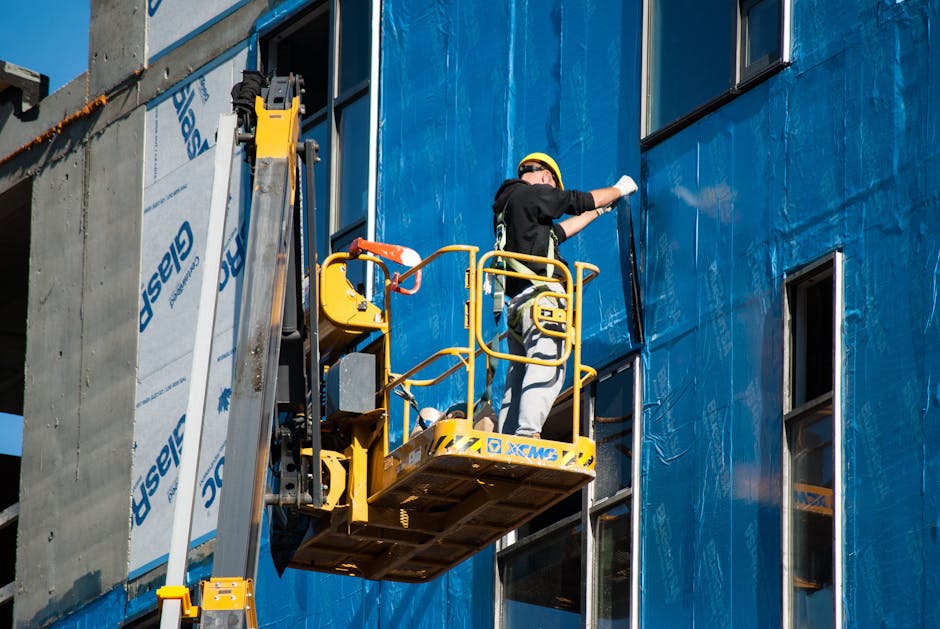
Choosing the Right Solution
Each of these insulation types has its place in creating an energy-efficient home. The best choice depends on your specific needs, climate, and budget. Foam insulation offers excellent air sealing and high R-values. Batt insulation is cost-effective and great for DIY projects. Reflective systems are ideal for hot climates, and SIPs offer a fast, highly efficient way to build or renovate a home.
Combining these solutions with proper air sealing and attention to R-values can transform your home into a fortress against unwanted heat flow, making it more comfortable and reducing your energy bills.
In our next section, we’ll explore cost-effective ways to insulate your home, ensuring you can achieve maximum comfort and energy efficiency without breaking the bank. Stay tuned for practical tips and tricks that will help you insulate on a budget.
Cost-Effective Ways to Insulate Your Home
When it comes to home insulation solutions, not everyone has the budget for extensive renovations. However, there are several cost-effective ways to enhance your home’s insulation, keeping it warm in the winter and cool in the summer. Let’s dive into some practical options.
Batt and Roll
Batt and roll insulation is a classic and budget-friendly choice. It’s made from fiberglass or mineral wool and comes in rolls or pre-cut panels. This type of insulation is ideal for DIYers because it’s easy to handle and install between the framing in your walls and attic. Wearing protective gear is crucial because fiberglass can irritate your skin and lungs.
Loose-fill
Loose-fill insulation involves materials like cellulose, fiberglass, or mineral wool that are blown into attics or wall cavities. It’s particularly effective for filling irregular spaces or for adding insulation over existing material. While the installation of loose-fill insulation might require professional equipment, the material itself is relatively inexpensive. This makes it a cost-effective solution for hard-to-reach areas.
DIY Solutions
There are several DIY solutions for enhancing your home’s insulation without a hefty price tag. For instance:
- Window insulation kits can significantly reduce heat exchange through windows, one of the most common places homes lose heat. These kits are inexpensive and easy to install.
- Draft stoppers for doors and windows are another simple, yet effective way to keep your home warm.
- Reflective foil can be placed in attics to reflect heat back into the home, rather than allowing it to escape through the roof.
Insulating on a Budget
Insulating on a budget doesn’t mean you have to compromise on quality. Here are some tips to keep in mind:
- Prioritize: Focus on areas that lose the most heat, like the attic, walls, and floors. An energy audit can help identify these spots.
- Seal leaks: Use caulk or weatherstripping to seal leaks around doors, windows, and any other gaps. This is a low-cost way to prevent heat loss.
- Use what you have: Sometimes, simple adjustments can improve your home’s insulation. For example, during the winter, make sure that the curtains are closed at night to keep the heat in. During the day, opening them can let sunlight naturally warm your home.
Every little bit helps when it comes to insulation. Implementing even a few of these cost-effective solutions can lead to noticeable improvements in your home’s comfort and energy efficiency.
We’ll delve deeper into innovative materials and techniques that can further enhance your home’s insulation. Stay tuned to learn about cutting-edge solutions like spray foam and insulating concrete forms that offer superior insulation and energy savings.
Innovative Insulation Materials and Techniques
In the quest for home insulation solutions that offer both energy efficiency and comfort, there are several innovative materials and techniques that stand out. These options not only provide excellent insulation but also come with unique benefits that can suit different needs and preferences. Let’s explore some of these options:
Spray Foam
Spray foam insulation is a game-changer in the insulation world. It’s applied as a liquid that expands and hardens into foam, creating a tight seal that blocks air leaks. This makes it an excellent choice for reducing energy bills and keeping your home comfortable year-round.
- Benefits: Spray foam fills gaps and cracks with precision, offering superior air sealing. It also has the added advantage of not settling over time, maintaining its effectiveness for years.
- Use Cases: It’s perfect for attics, walls, and hard-to-reach areas, providing both insulation and air sealing in one go.
Insulating Concrete Forms (ICFs)
ICFs are forms for poured concrete walls that stay in place as a permanent part of the wall assembly. The forms are made of insulating material, usually foam.
- Benefits: ICFs offer a robust combination of structural strength and insulation. They’re known for reducing energy consumption significantly, thanks to their thermal resistance.
- Use Cases: Ideal for new construction projects, ICFs are used in foundations and walls, providing excellent insulation and soundproofing.
Rigid Foam
Rigid foam boards are a versatile insulation option that can be used in various parts of a home. They come in several types, including polystyrene, polyisocyanurate, and polyurethane.
- Benefits: These boards provide high R-values for relatively thin layers, making them great for areas where space is limited. They can also be used to create a continuous insulation layer, reducing thermal bridging.
- Use Cases: Rigid foam is suitable for insulating basements, crawl spaces, and exterior walls.
Fiberglass
Fiberglass insulation is made from fine glass fibers and is one of the most common types of insulation. It comes in batts, rolls, and loose-fill forms.
- Benefits: It’s relatively inexpensive and easy to install, making it a popular choice for DIY projects. Fiberglass is also non-flammable and resistant to moisture damage.
- Use Cases: Ideal for insulating attics, walls, and floors, fiberglass can fit between studs, joists, and beams.
Mineral Wool
Mineral wool can refer to either rock wool or slag wool and is made from natural or synthetic minerals or metal oxides.
- Benefits: Mineral wool is known for its fire resistance and soundproofing abilities. It’s also highly effective at blocking heat transfer, making it an excellent insulator.
- Use Cases: This material is versatile and can be used in walls, attics, and as loose-fill insulation in hard-to-reach areas.
Each of these innovative insulation materials and techniques offers unique advantages that can help homeowners achieve a more energy-efficient and comfortable living environment. Whether you’re building a new home or upgrading an existing one, considering these options can lead to significant energy savings and improved indoor comfort.
Enhancing Home Insulation for Energy Efficiency
Improving your home’s insulation isn’t just about adding more material between the walls. It’s about smart, strategic enhancements that target the areas where heat loss and gain happen most. Let’s dive into how you can boost your home insulation for better energy efficiency.
Air Sealing
First things first, air leaks are your enemy. They let warm air escape in the winter and sneak in during the summer, making your HVAC system work overtime. The solution? Air sealing. This involves finding leaks around doors, windows, and even electrical outlets, then sealing them with caulk or weatherstripping. It’s a simple step with a big impact on your home’s comfort and energy bills.
Attic Insulation
Heat rises, right? That means your attic is a prime spot for heat loss in the winter and heat gain in the summer. Adding insulation here can make a huge difference. Options like spray foam or fiberglass batts can be applied to the attic floor and between rafters to keep your home’s temperature more stable. The thicker the insulation, the better it will perform.
Wall Insulation
Walls are a bit trickier, especially if you’re not keen on opening them up. But fear not, there are solutions like injected foam insulation that can be done with minimal disruption. This type of insulation fills the gaps between your wall studs, blocking heat transfer. It’s an effective way to enhance your home’s insulation without a major renovation.
Basement and Crawl Space
Don’t overlook these areas! Insulating your basement and crawl space can prevent cold floors and reduce heat loss. Rigid foam boards attached to the walls or spray foam can seal off these cooler areas from the rest of your house. This not only improves comfort but also prevents moisture problems that can lead to mold.
Windows and Doors
Finally, windows and doors are like the eyes and mouth of your home – they need to be properly sealed to keep the elements out. Double or triple-glazed windows provide an extra barrier against temperature changes. For doors, make sure the thresholds and weatherstripping are in good condition and consider a door sweep to block drafts.
By focusing on these key areas, you can significantly enhance your home’s insulation and energy efficiency. Not only will this lead to lower energy bills, but it will also make your home more comfortable year-round. Every home is unique, so it’s important to assess your specific needs and plan accordingly. Whether you’re tackling this project on your own or hiring professionals, enhancing your home insulation is a smart investment in your home’s future.
Frequently Asked Questions about Home Insulation
Insulating your home is a smart move. It saves energy, keeps you comfortable, and can even reduce your bills. But with all the options and advice out there, it can get confusing. Let’s break down some common questions in simple language.
What is the most effective insulation for a house?
The “best” insulation depends on your home’s design, climate, and your budget. However, spray foam insulation stands out for many homes. Why? Because it provides a high R-value per inch, creating an effective barrier against heat loss and gain. Plus, it doubles as air sealing to block drafts.
In cold climates, structural insulated panels (SIPs) and rigid foam are excellent for keeping the warmth in. In hotter areas, reflective systems can reflect heat away from your home.
The effectiveness also depends on correct installation. Even the best materials can fall short if not properly installed.
What is the most cost-effective way to insulate a house?
Cost-effectiveness isn’t just about the initial price. It’s about long-term savings on your energy bills. Batt insulation made from fiberglass or mineral wool is affordable upfront and fairly easy to install yourself, making it a popular choice for many homeowners.
Loose-fill insulation can be a great option for attics and hard-to-reach areas. It’s less expensive than spray foam and can be a DIY project if you’re handy and have the right equipment.
For those on a tight budget, focusing on air sealing and insulating your attic can offer the most bang for your buck. These areas often have the biggest impact on your home’s energy efficiency.
How can I make my house more insulated?
Improving your home’s insulation can be a big project, but there are steps you can take at any budget:
-
Seal leaks around doors, windows, and any areas where plumbing or electrical lines enter the house. Use caulk or weather stripping.
-
Add or upgrade attic insulation. Heat rises, and a poorly insulated attic is often the biggest source of heat loss in a home.
-
Consider adding insulation to your walls. This can be more involved and may require professional help, especially for existing homes.
-
Insulate your floors and basement. Rigid foam boards or spray foam can be used on basement walls, and underfloor insulation can keep floors warm.
-
Upgrade your windows. Double-glazed windows can significantly reduce heat loss. If that’s out of budget, heavy curtains or window insulating film can also help.
Every home is unique. What works for one might not be the best for another. Starting with a home energy audit can help you identify the most effective steps for your home.
Making your home more insulated is an investment in comfort, energy efficiency, and even the planet. With the right approach, you can enjoy a cozier home and lower energy bills. And remember, companies like Spray Foam Insulation USA are here to help with expert advice and high-quality insulation solutions.
Conclusion
When we wrap up our journey through home insulation solutions, two key benefits stand out: energy savings and comfort improvement. These aren’t just perks; they’re transformative changes that can redefine how you live in your space. Let’s break down why these benefits matter and how Spray Foam Insulation USA plays a crucial role in bringing them to your doorstep.
Energy Savings: The Heart of Home Insulation
Insulating your home is like putting a thermal blanket around it. This blanket keeps the warmth in during winter and out during summer, meaning your heating and cooling systems don’t have to work overtime. The result? Significant reductions in your energy bills.
But it’s more than just about saving money. By reducing our energy consumption, we’re taking a step towards sustainability, lessening our carbon footprint on the planet. It’s a win-win: save money and help save the earth.
Comfort Improvement: A Cozy Home Year-Round
Imagine a home that stays warm in the biting cold of winter and cool during the scorching days of summer. That’s the power of effective insulation. It eliminates drafts, hot and cold spots, creating a consistently comfortable environment throughout your home. This level of comfort enhances your quality of life, making your home a sanctuary where you can truly relax and unwind.
Spray Foam Insulation USA: Your Partner in Home Insulation
At Spray Foam Insulation USA, we’re not just selling insulation; we’re offering a pathway to a more efficient, comfortable home. Our spray foam solutions stand at the forefront of insulation technology, offering superior air sealing and moisture resistance compared to traditional materials.
Our expert team is committed to providing tailored solutions that fit your specific needs, ensuring that every nook and cranny is covered. From attics to basements, and everything in between, we’ve got you covered. Plus, our eco-friendly options mean you can improve your home’s efficiency without compromising on your environmental values.
Ready to transform your home? Let’s make it happen. Contact Spray Foam Insulation USA today and take the first step towards a more energy-efficient, comfortable living space. Discover the difference the right insulation makes, not just for your wallet, but for your overall well-being.

